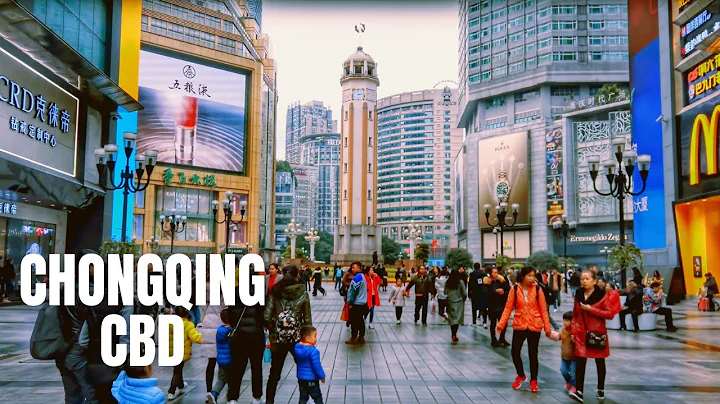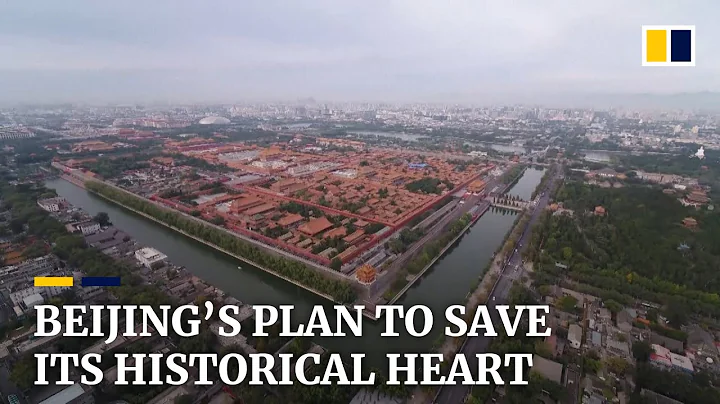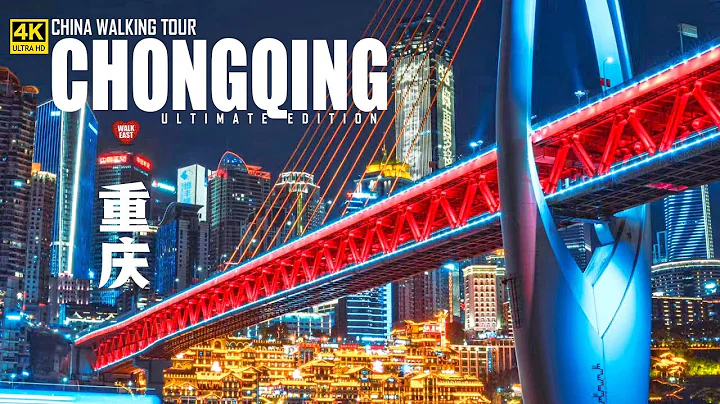The so-called Nine Palaces and Bagua in Chongqing
Text/Wang Shaohong, Drawing/Xiong Jiashu
Anyone familiar with old Chongqing knows that there is a legend of "Nine Palaces and Bagua" in the old city of Chongqing. In fact, this refers to the seventeen gates of old Chongqing!
Speaking of these 17 city gates, they have a long history and can be traced back to the era of Zhu Yuanzhang in the Ming Dynasty. At that time, there was a lot of emphasis on urban construction. Dai Ding, the defender of Chongqing, asked a Feng Shui master to study the trend of the peninsula in Chongqing, and finally built 9 gates: Chaotian Gate , Qiansi Gate , Linjiang Gate , Tongyuan Gate , Nanji Gate, Jinzi Gate, Chuqi Gate , Taiping Gate and Dongshui Gate ; there are 8 closed gates: Cuiwei Gate , Tai'an Gate, Renhe Gate, Fenghuang Gate, Jintang Gate, Hongya Gate, Dingyuan Gate , Xishui Gate .
Do you think a lot of them are familiar, especially the names in Opening the Door? As an old Chongqing native, when I opened the door, I said that except for Jinzimen, I had heard of other place names; and Tongyuanmen still exists to this day! I have wondered before: Why is there no temple in Shangqing Temple and ? Chaotianmen has no door? In fact, it seems that these doors once existed.
There are place names, at least I know where the nearby city gate is, but the golden and purple gate is basically unknown. It is said that it is near Chuqi Gate, facing the river. There is a Jinzi Temple nearby, which used to be very lively. Of course, open the door. As the name suggests, the city gate is open. Since the door is open, there are basically people nearby. Bustling street market. Even though the city gate was no longer there, the prosperity prompted these names to be preserved in the form of place names. This is why place names with open doors are more common, but closed doors are rarely heard.
Taiping Gate is located near Wanglongmen in Yuzhong District (among the seventeen city gates, there is no Wanglongmen?) What is amazing is that in 2013, the Taipingmen of the Ming Dynasty was found by archaeologists! Based on the traces inside, archaeologists also speculated that people lived inside! (If you want to know the details, ask Du Niang yourself).

(Taipingmen ruins)
Let’s talk about closed doors - names like Renhe and Jintang, although there are similar place names now, most of them have nothing to do with the city gate - I think this is also the reason: in those days, the city gates were basically on Jiang If you're facing the river, if you're in the hinterland, it's probably just the same name.
Cuiwei Gate is said to be between Dongshui Gate and Chaotian Gate. In the "Zengguang Complete Geographic Map of Chongqing", Cui Wei Gate is shown opposite the east entrance of Caijiawan and the southern end of Meige Street.
Tai'anmen is between Dongshuimen and Taipingmen, facing the river. There is relatively little information about Tai'anmen, and the specific location is difficult to verify.
人和门: Do you know 人和街 in Yuzhong District? It's near Daxigou, but it is said that this street has nothing to do with Renhe Gate. The real Renhe Gate is located between Taiping Gate and Chuqi Gate. The Baokan opposite the south entrance of Chushuang Alley is the former site of Renhe Gate.

(former site of Renhe Gate)
Phoenix Gate is between Nanji Gate and Jinzi Gate, also facing the Yangtze River.
Jintangmen: There is Jintang Street near Tongyuanmen, but like Renhemen, it has nothing to do with Jintangmen. Judging from the location marked in the "Chongqing Ancient City Map of the Qianlong Emperor of the Qing Dynasty", the real Jintang Gate is between Nanji Gate and Tongyuan Gate, on the Leijia Slope facing Daqunba among the peaks and ridges. Outside the city are cliffs and high valleys, and the city gate It is directly opposite the coral dam on the edge of the Yangtze River.
Hongyamen: According to ancient records, Hongyamen is located between Linjiangmen and Qiansimen, which should be near the current Hongyadong .

(Hongya Gate)
Dingyuan Gate: It is located between Tongyuan Gate and Linjiang Gate. There is an old saying that "Dingyuan Gate, Jiaochang Dam", so Dingyuan Gate should be near Jiaochangkou.
Xishuimen is located between Qiansimen and Chaotianmen, close to Qiansimen. It is said that it is opposite to Dongshuimen, so it is called Xishuimen.

The 17 city gates of old Chongqing (Photo/Xiong Jiashu)
Comparing the map to see the location of the city gates, we found that the seventeen city gates are concentrated in Yuzhong Peninsula, which is today's Yuzhong District. You can imagine the city of Chongqing in ancient times and Today's Chongqing is very different - what people used to call Chongqing was just today's Yuzhong District. Until the early 1990s, people in other areas of Chongqing still called it "going to the city" when going to Yuzhong District. As for Jiangbei District, South Bank District, Jiulongpo District, etc., they were basically farmland or barren hills.
Green Lion and White Elephant, Chaotian Gate and Cuntan Wenfeng Pagoda
There is an old saying in old Chongqing that "Green Lion and White Elephant lock the river", which refers to the green lion statue at Ciyun Temple in Nan'an District and the white elephant statue at Baixiang Temple. This sentence comes from the Qianlong period. Why should we lock the river and why should we use green lions and white elephants? I will talk about this later.
Today, Ciyun Temple is still there, but it is impossible to verify which Green Lion it is; and the White Elephant Temple has also been lost in history, leaving only the name of Baixiang Street . It is said that the White Elephant Temple was at the intersection of the street, across the river from Ciyun Temple.

(Ciyun Temple, Nan'an District)
Things in ancient China are all about "rightness", so green lions and white elephants appear together. This concept comes from Buddhism. The green lion and the white elephant are the mounts of Manjushri and Samantabhadra respectively, and can also be regarded as the incarnation of Bodhisattva. Why should
lock Jiang? This still originates from ancient folk customs. The ancients particularly liked the meandering river water. They wanted it to twist and turn, forming the shape of Huilong Guzu, so that it would turn back step by step as it flowed away, and flow away with nostalgia. Only such water can be called sentimental and auspicious water. There is an old saying that "Mountains manage people but water manages wealth", so the straight flow of water is even more taboo. That's why we have to use green lions and white elephants to lock the river and the wealth of the Yuzhong Peninsula.
Not only the green lion and the white elephant, here we will talk more about Chaotianmen and Cuntan Wenfeng Tower.
Chongqing has been a wharf since ancient times. This wharf refers to Chaotianmen - the current Ciqikou was also a wharf before, so it is called Little Chongqing. Of course, this is a digression. Chaotianmen is a place where two rivers meet. This kind of terrain is most likely to become a prosperous business district. In the past, this kind of place was called "jade belt around the waist". The tip of Chaotianmen faces the direction of the Yangtze River, which is today's Cuntan. In ancient times, this Cuntan was called the "Shuikou" of Chongqing City, where the water flows away. As mentioned earlier, mountains manage people but water manages wealth, and Cuntan is also a place that locks Chongqing's wealth. Therefore, in the late Qing Dynasty, the government built a tower here, which is today's Cuntan Wenfeng Tower.
If you can use Google map, you can clearly see that Chaotianmen and Cuntan actually have this connection. Although the Green Lion, White Elephant and Cuntan Tower were born due to some superstitious ideas, it is quite interesting to understand the history of these old buildings in Chongqing now.
Nanshan Wenfeng Pagoda
Chongqing is located in the southwest border of China and borders Qiangui. It has been a barbaric land since ancient times. China's feudal rulers have paid less attention to the cultural development here. Therefore, during the Daoguang period of the Qing Dynasty, As Chongqing's economy continued to develop, local gentry built a Wenfeng Pagoda on a peak of Nanshan Mountain, hoping to enhance the cultural spirit of the entire Chongqing.

(Nanshan Wenfeng Tower)
This tower is now very famous. You can see it from the cliff of Laojun Cave in Nanping. However, many people feel that this location is very remote, and there are even fewer people who have actually been to this tower. Why choose this location? People in the feudal era would not choose the location of any building they built at will. Let’s take a look at why Wenfeng Pagoda was built here.
No. 1. This location overlooks the entire city of Chongqing. You can see Zhongliang, Jialing and even the remaining lines of Longwang Cave in the distance. You can see Yuzhong and the confluence of the two rivers nearby. It shows that one tower can cover the entire city. So domineering!
Secondly, this place is located exactly at the southeast peak of Ba County Yamen on the Yuzhong Peninsula. Southeast is called Xun Gua in the Bagua, and it governs Wenchang.Go and see what the southeast corner of the old Beijing map is called - Wenchangli; take a bird's eye view of the Forbidden City map and see what's in the southeast corner - Wenyuan Pavilion , Wenhua Palace ! Now you can understand, this Wenfeng Tower should have been located in the southeast!
Sanmao, the goddess of literature and art that many people like, was born in Huangjueya, Nanshan, not far from the Wenfeng Pagoda. I don’t know if this is the manifestation of the pagoda.








![Forbidden City, Beijing, China [Amazing Places 4K] - DayDayNews](https://i.ytimg.com/vi/R9vcSWb6mug/hq720.jpg?sqp=-oaymwEcCNAFEJQDSFXyq4qpAw4IARUAAIhCGAFwAcABBg==&rs=AOn4CLCnCMUeLv-HF3vZP_s6awuq8h6qXw)












